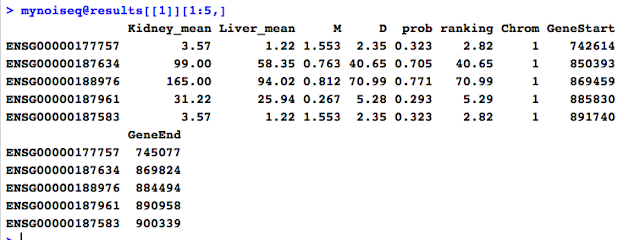http://bioconductor.org/packages/release/bioc/html/NOISeq.html
M: fold-change differences
D: absolute expression differences
(M,D) pair for each gene is evaluated based on a null distribution estimated from technical or biological replicates or simulations in 2011GR.
In NIOSEQBIO, theta=(M+D)/2 seems to be the statistic used for null distribution based on my understanding of its manual.
Probability = 0.8 was the cutoff for differentially expressed genes in 2011GR.
Probability = 0.95 (FDR) is recommended for biologically replicated samples.
In its Tarazona2011GR, noiseq-real and noiseq-sim were used. These two versions have now evolved to noiseq and noiseqbio.
NOISEQBIO is optimized for biological replicates.
When using noiseq and noiseqbio, normalization and filtering can be done through parameters, 'norm'.
Regarding the low-count filtering, it is not necessary to filter in NOISeq method. In contrast, it is recommended to do it in NOISeqBIO , which by default fliters out low-count features with CPM method (filter=1 ).
# noiseq(input, k = 0.5, norm = c("rpkm","uqua","tmm","n"), replicates = c("technical","biological","no"), factor=NULL, conditions=NULL, pnr = 0.2, nss = 5, v = 0.02, lc = 0)
nss = 5, v = 0.02, lc = 1, replicates = "technical")
head(mynoiseq@results[[1]])
> myfactors
Tissue TissueRun
R1L1Kidney Kidney Kidney_1
R1L2Liver Liver Liver_1
R1L3Kidney Kidney Kidney_1
R1L4Liver Liver Liver_1
R1L6Liver Liver Liver_1
R1L7Kidney Kidney Kidney_1
R1L8Liver Liver Liver_1
R2L2Kidney Kidney Kidney_2
R2L3Liver Liver Liver_2
R2L6Kidney Kidney Kidney_2
mynoiseqbio = noiseqbio(mydata, k = 0.5, norm = "rpkm", factor="Tissue", lc = 1, r = 20, adj = 1.5, plot = FALSE, a0per = 0.9, random.seed = 12345, filter = 2)
# "r=20" seems to indicate 20 bootstraps when biological replicate number <5.
Authors stated that noiseq output prob are not equivalent to p-values?
Q: what are "up" and "down" deg referenced to?
Output format
mynoiseq.deg1 = degenes(mynoiseq, q = 0.8, M = "up")
References:
[1] S. Tarazona, F. Garca-Alcalde, J. Dopazo, A. Ferrer, and A. Conesa. Dierential expression in RNA-seq: A matter of depth. Genome Research , 21: 2213 - 2223, 2011.
[2] S. Tarazona, P. Furio-Tar, D. Turra, A. Di Pietro, M.J. Nueda, A. Ferrer, and A. Conesa. Data quality aware analysis of dierential expression in RNA-seq with NOISeq R/Bioc package. Nucleic Acids Research ,
43(21):e140, 2015.
[8] B. Efron, R. Tibshirani, J.D. Storey, V. Tusher. Empirical Bayes Analysis of a Microarray Experiment. Journal of the American Statistical Association , 2001.







No comments:
Post a Comment